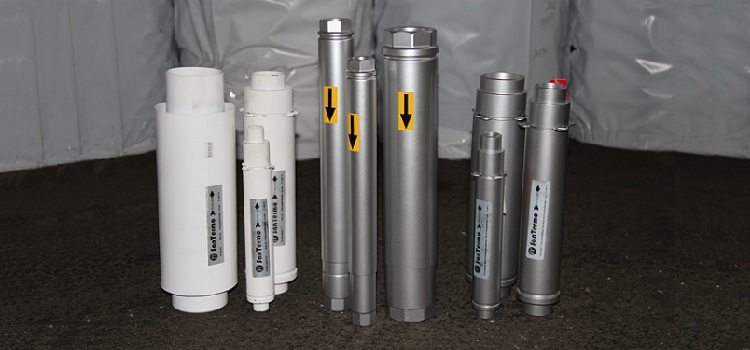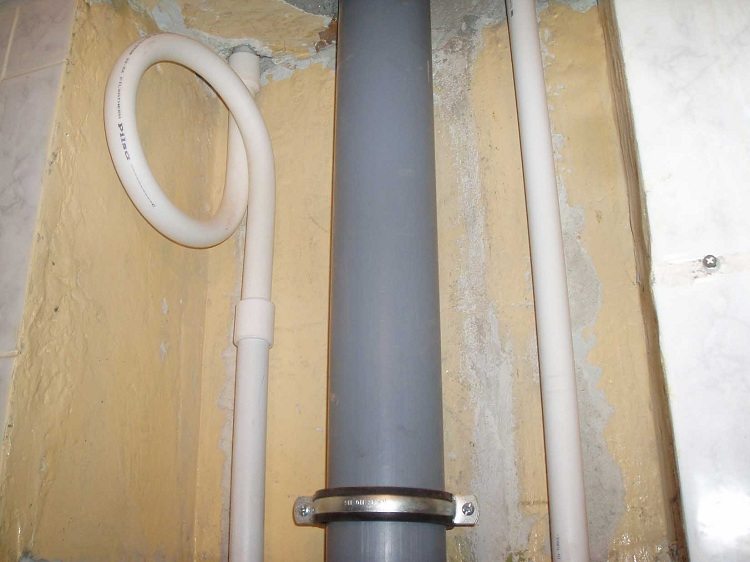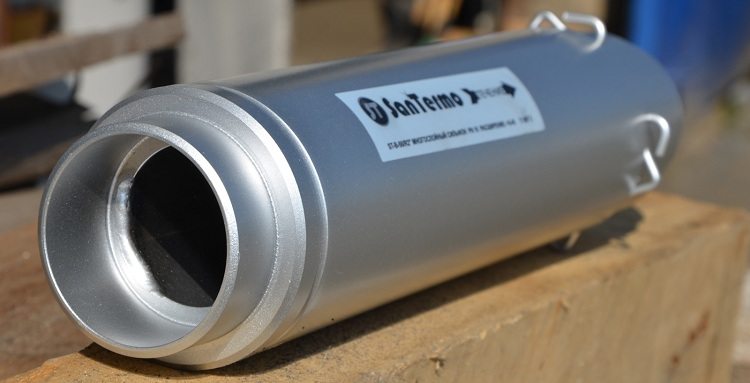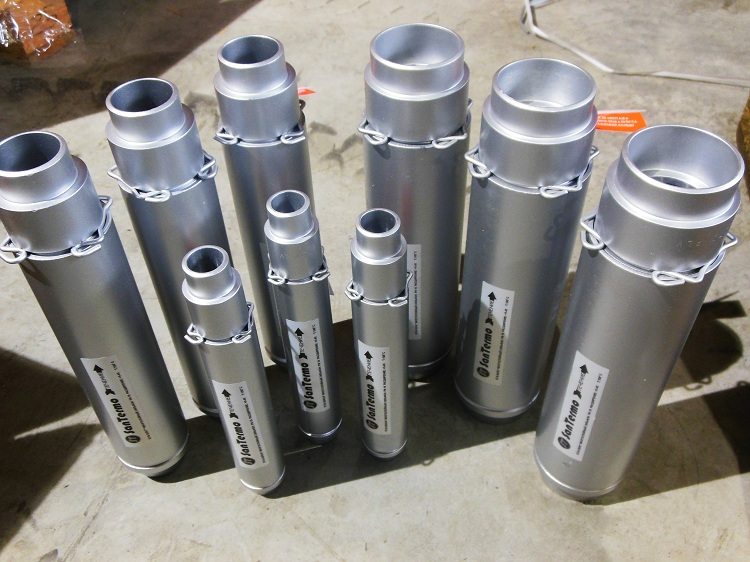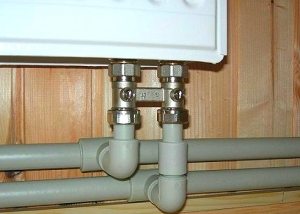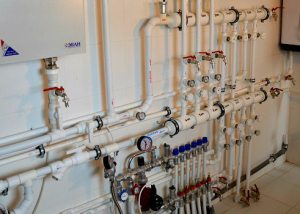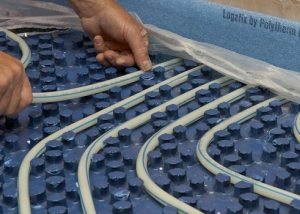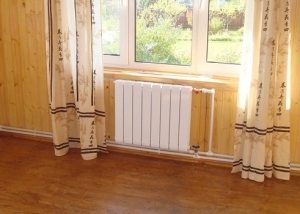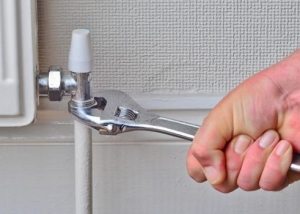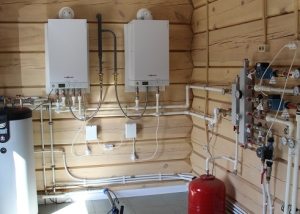Thanks to new technologies and materials, many types of work on arranging communications in a private house are not difficult to do with your own hands. Most components are on sale, and those that require refinement or assembly are not difficult to do on their own. These include the simplest expansion joints for round-shaped polypropylene pipes or another type. The method of installing them in a domestic environment will not be difficult if everything is done sequentially.
Content
Scopes of water compensators
Temperature compensators for pipelines are another way to improve the functioning and extend the life of communications. This is a flexible piece of the connecting structure in the form of a wrapped loop made of a piece of polypropylene pipe.
Expansion joints for polypropylene pipes - a simple addition to the hot water system or heating pipes. The device compensates for thermal expansion during a sharp temperature jump inside the pipe. With a sharp increase in the pressure of the coolant inside the pipeline, this device also takes over part of the load.
Some types of compensators are available in finished form. A home-made part is much cheaper, but it will take some time and knowledge of the technology to mount the simplest structure of this type. Stabilizers of the polypropylene pipeline work compensators can be used:
- in the water supply line;
- in the heating system;
- in the sewer device.
Compensation of thermal and linear expansion requires not only private homes, but also industrial buildings or office buildings. As a rule, such a loop-shaped device is mounted in the middle of the pipeline - in the interval between the fixed sections of the straight pipe for heating.
Using this part guarantees:
- increased pipe life;
- quenching of vortex flows;
- stabilization of the working pressure of the water supply system;
- tightness of the system with a sharply increased load;
- minimization of linear expansion of the pipeline with hot water.
The presence of a compensator is a guarantee of stable operation of the line for supplying a liquid medium of any type. Due to its loop-like shape, the flexible polypropylene expansion joint is mounted on both the horizontal and vertical parts of the pipeline.
Varieties of compensators
Several types of compensators have been developed and tested in practice:
- Loop-shaped is the simplest device.
- "Coil".
- Axial bellows (marking arrester or CSR).
- Flanged (from soft material, to soften water hammer, has convenient assemblies for installation).
- Bellows (the unit is designed to regulate linear expansion).
- Shear (for damping linear expansion in 2 planes, where 2 stainless steel corrugations are connected by fasteners).
- Universal (effective for displacement in axial, angular or transverse directions, suitable for a small section of pipelines with branches where other varieties are not used).
- Swivel (in places where the pipe is turned, it is used where the direction of the pipeline changes by 90 ° in any direction).
In practice, any variety gives the expected results, but they can only be used for plots of flexible polypropylene.
The compensator is one of the convenient ways to mount the rotary fragment. It provides functions to stabilize internal pressure and minimize internal turbulence.
The best products are offered by Finnish companies and Turkish Kayse, known for a large assortment. SanTermo devices have also worked well in the domestic market. Thanks to high-quality materials of high quality, this important part guarantees perfect operation and absolute tightness with proper articulation. Communications of heating and hot water supply with such simple equipment increase the working life - up to 50 years.
Expansion joints
O-shaped expansion joints for polypropylene pipes (loops) are made from a piece of high density polypropylene. They can be purchased ready-made (white and gray). This lightweight and easy-to-install part is quickly incorporated into the water supply system. The main mounting methods:
- welding;
- flange connection.
Most types of such devices require rigid fixation using soldering and welding. When the diameter of the pipe and the compensator coincide, a high tightness of the joint is ensured.
Attention! Flange connection, as more complex, it is better to entrust to a specialist. For such a fixation, the technical unit is not mounted on the pipeline itself, it also requires a “counter” flange. This provides a detachable joint, which is convenient to replace when breaking through the system.
Polypropylene bellows expansion joints are used for short pipe gaps to cushion the linear expansion of the flex. It is suitable for maintenance in buildings of various functionalities, where the temperature drops of the coolant during the heating period are frequent.
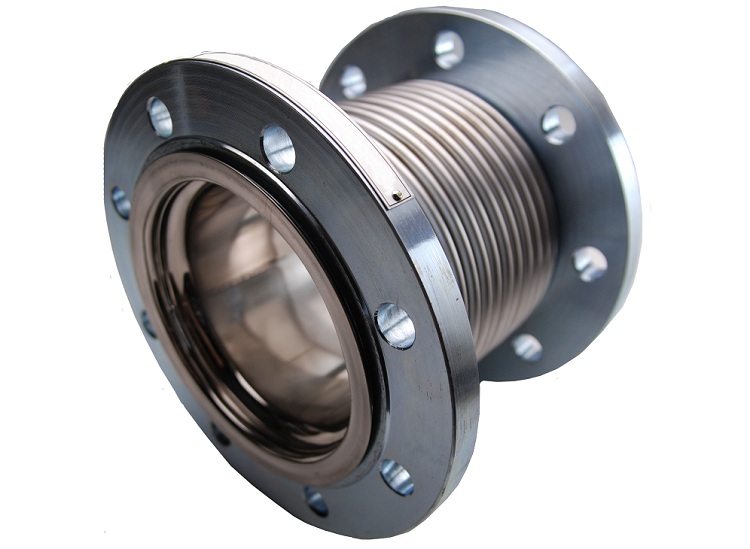
Compensator with flange mounting provides a detachable connection that allows you to quickly replace a failed part
How to choose a compensator?
The operability of the entire system depends on the correct choice of such a device. Therefore, you should heed the following tips:
- The purchase of a finished unit assumes that its design matches the characteristics of the pipeline section.
- It is required to measure the diameter of the pipe in order to select a compensator that fully corresponds to the given parameters. The most popular flexible pipes in everyday life are in the range of 20 - 40 mm.
- The flange compensator for polypropylene pipes assumes a tight detachable connection, and in case of an emergency break in the pipeline, the compensator can be replaced quite quickly.
- Installation is carried out on a straight section of the pipeline for heating, using the type of compensator that is most appropriate. Before installation, they check once again whether the diameter of the pipe and the built-in technical unit matches.
- The gap between expansion joints of various configurations varies within 3 m. When welded, a loop or bellows assembly is most often used.
The cost of compensators of any type is within 500 rubles. Due to the simplicity of design and installation, they are installed independently.
What is important to know about the calculations when installing expansion joints on polypropylene pipes?
When inserting any additional fragment into the pipeline, not only its functionality is important, but also compliance with the installation technology. This ensures a tight joint.The installation of expansion joints on polypropylene pipes is no exception, therefore, it is important that the external and internal diameters of the communications coincide with the joint assembly.
High-quality work involves calculating the load and drawing up a diagram of all the wiring from polypropylene pipes. In this case, it will be obvious where it is most appropriate to place additional nodes. When calculating expansion joints for polypropylene pipes, all parameters are taken into account, including pipe cross-section, outer and inner diameters, types of bends, and the type of similar and mounted devices that are already installed.
The flow voltage and working pressure inside the network affects the strength of the system. The total number of turning and other sections of complex configuration matters. It is important to consider the distances between flexible and rigid sections, supports of various types. The general pressure indicators of the system are affected by a change in diameter in different areas. Swivel compensators reduce the overall load on the heating system. The fixed support closest to the expansion joint is additionally fixed during installation.
Calculation of expansion joints for polypropylene pipes
should also include an indicator of linear elongation of the communications segment under thermal exposure. All distances, taking into account the scale and all values, should be indicated in the diagram - for clarity.
The requirements for the installation of compensating nodes are as follows:
- Starting welding, experts recommend closing all technical units with asbestos cloth to protect polypropylene from metal sparks.
- The installation of compensators is carried out on direct sections of the water supply system.
- The compensator, before installing, must be carefully examined to check for defects, since a defective product will not ensure the reliability of the pipeline and its tightness.
- The technology for fixing expansion joints for polypropylene heating pipes depends on the type of assemblies being mounted. And the method that has been successfully used in other cases is not always able to provide strength in another specific case. Welding is the most reliable fixation method. The installation method, called "American", is quite popular among specialists, where a detachable fitting with a metal thread and a polypropylene base is used.
Note! The process of attaching the unit to the heating pipes does not take much time and consists of such stages as preparation, calculation and planning of the placement of other units, pipe cutting and welding measures.
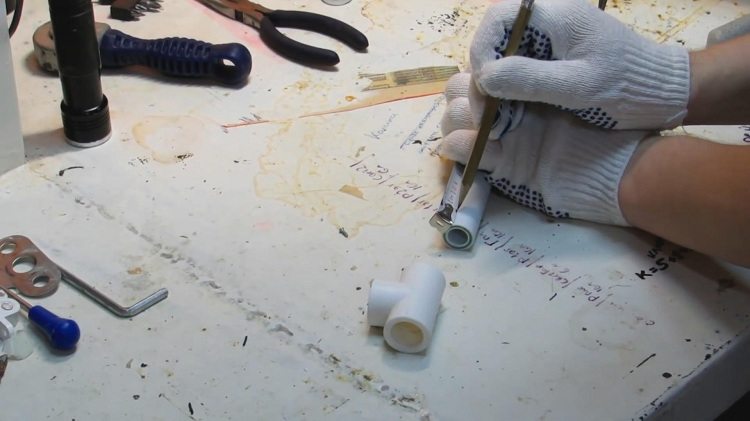
If you plan to install a plastic expansion joint, then the technology for connecting it to the pipeline parts is no different from the installation of the pipes themselves
For high-quality welding, you need a special soldering iron of the required power. It is important that the end face of the compensator included in the polypropylene pipe is well cleaned from burrs and irregularities. The soldering iron (welding machine for soldering polypropylene) is plugged in and heated to a temperature of about 260 ° C. After that, the soldering iron indicator goes out, which confirms its readiness for the welding process.
The prepared end face of the compensator and the pipe itself for inserting the unit is heated by a special welding machine with nozzles that must correspond to the size of the pipe. The heated ends should melt, after which they are quickly connected so that the polymer seizes and solidifies after docking. At this time, you need to firmly fix the ends of the pipeline and the compensator for pipes. It is impossible to rotate, correct or displace molten ends, otherwise the seam will lose tightness. For articulation of a combined type, where soft expansion joints are used for a metal pipeline, both fusion and threaded joining are used.
In the absence of water in the system, the valves are removed, the pipes are pre-cleaned with a special cable so that the sediment accumulated inside does not interfere with the fixation process. After preparing the pipes, a combination type connection is made. In this case, the flexible unit is welded to the flange for landing on the pipeline. Metal parts are threaded.
With careful preparation for installation and competent fixation, a tight joint of the pipe and the polypropylene compensator is guaranteed. It will dampen water turbulence, soften the linear and thermal expansion in the heating system or hot water supply.
